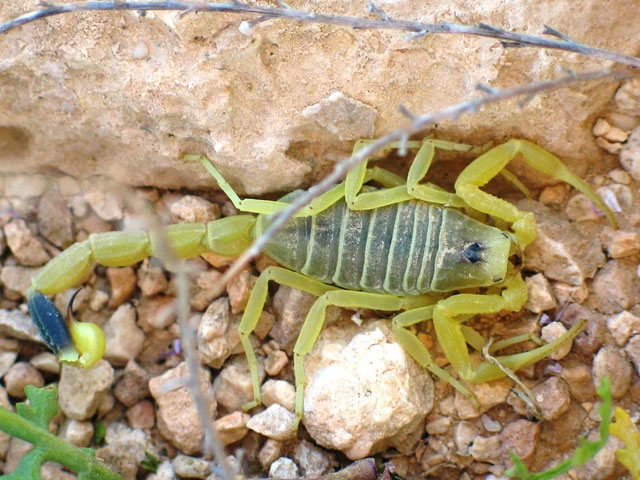A group of researchers has tested the famous saying about scorpions from Indiana Jones, and it turns out to be accurate.
“When it comes to scorpions, the bigger the better,” Indiana Jones says in the film Indiana Jones and the Kingdom of the Crystal Skull. It turns out that Jones’s knowledge is indeed correct.
A research team at the National University of Ireland put this idea to the test and found that smaller scorpions with smaller pincers have stronger venom than larger species. According to the university, there are over a million cases of scorpion stings each year, resulting in thousands of deaths.
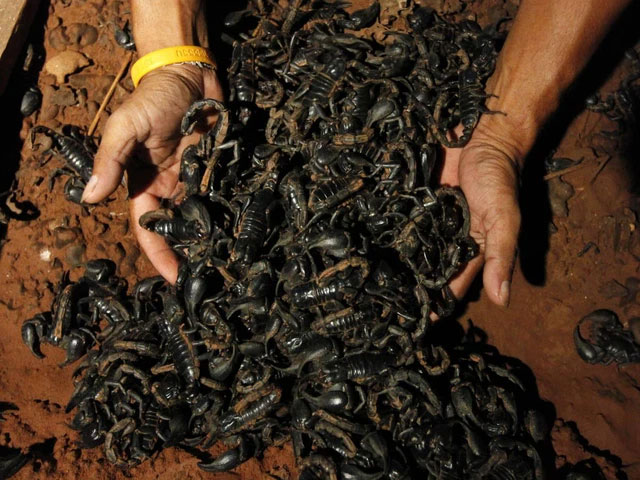
Smaller scorpions have more dangerous venom, and vice versa.
The research team analyzed 36 species of scorpions, including: deathstalker scorpion (Leiurus quinquestriatus), rock scorpion (Hadogenes granulatus), bark scorpion (Centruroides noxius), Israeli gold scorpion (Scorpio maurus), among others. They discovered that the smallest species has venom that is 100 times stronger than that of the largest species.
Their analysis included measurements of the average length of the scorpions, as well as the potency of their venom. The results confirmed Jones’s knowledge – the smaller the scorpion, the more dangerous its venom, and vice versa.
Brazilian gold scorpions, typically measuring 5-7.5 cm in length, have venom that is 100 times stronger than that of rock scorpions, which can reach lengths of up to 20 cm.
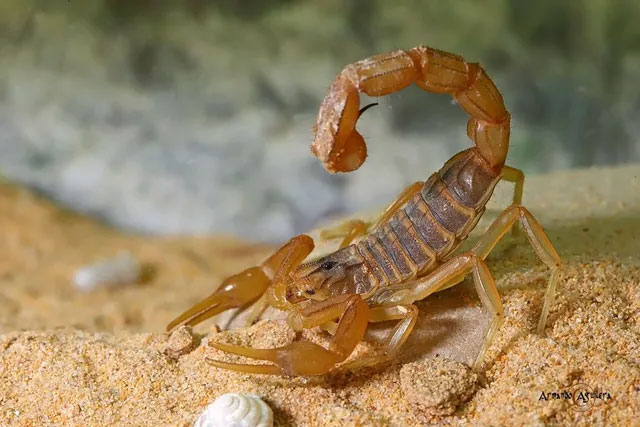
Brazilian gold scorpion
Dr. Healy stated: “When examining the venom of the most dangerous scorpions, we found that they tend to belong to relatively small species like the deathstalker scorpion. In contrast, the largest species like the rock scorpion have venom that only causes mild pain.”
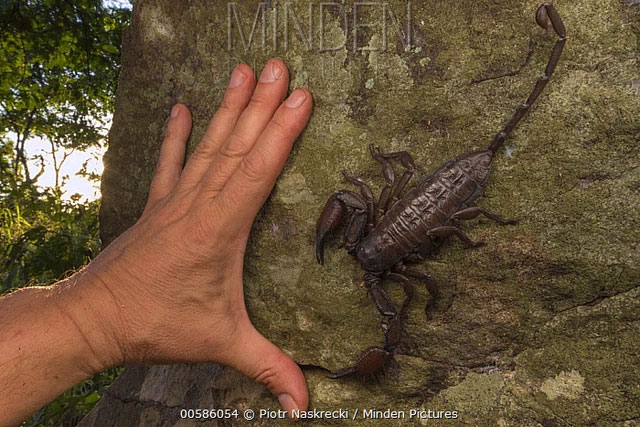
Rock scorpion
However, it’s not just body size – the size of the pincers also correlates with venom potency.
For example, the study found that the thick-tailed scorpion of South Africa has venom that is more than 10 times stronger than that of the Israeli gold scorpion, despite having significantly smaller pincers.
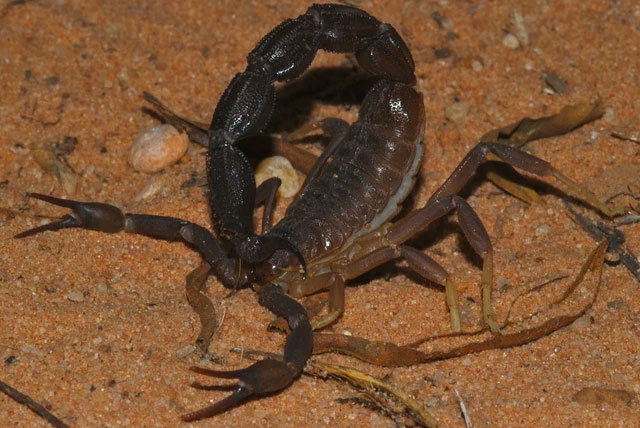
Thick-tailed scorpion of South Africa
Alannah Forde, the lead author of the study, said: “We not only found that larger scorpions are safer, but we also discovered that scorpions with larger pincers tend to be less dangerous.”
“While species like the Israeli gold scorpion can range from small to medium sizes, they primarily rely on their large pincers rather than relatively weak venom.”

Israeli gold scorpion
Scorpions use both their venom and pincers to capture prey and defend themselves.
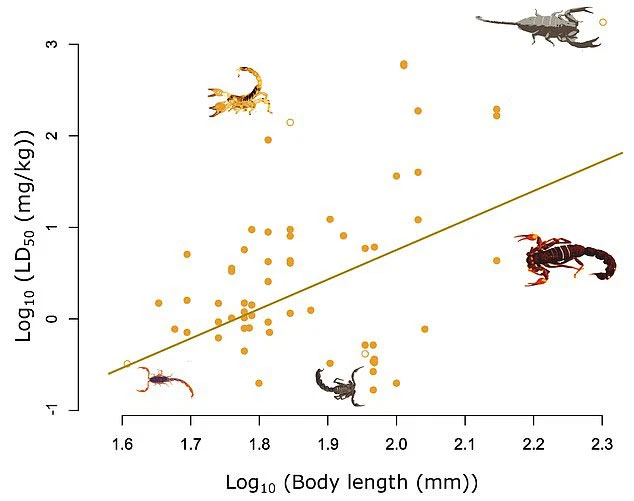
According to the researchers, the findings suggest an evolutionary trade-off between these two types of weaponry. Species that invest more energy in larger pincers will have less energy available for venom production.
This leads to larger scorpions with gigantic pincers relying more on their physical size and being less dependent on venom, while smaller species with smaller pincers have evolved to develop stronger venom.
According to a 2008 study, there are over 1.2 million cases of scorpion stings each year, resulting in more than 3,250 deaths.
The research team hopes their findings will help develop better medical treatments for scorpion venom.
Dr. Michel Dugon, another author of the study, stated: “As scientists, our job is to put social concepts to the test.”
“Most victims hospitalized with severe symptoms after being stung by scorpions are children under 15 years old.”
“Identifying the species responsible for the sting is essential for providing accurate treatment, and a simple rule like ‘the bigger, the better’ is a small first step to saving lives.”








































